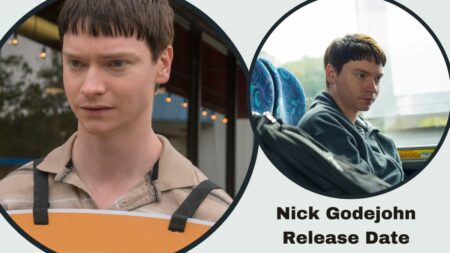Given a brief description, an astounding new AI system from Google can produce music in any genre. But the corporation has no plans to distribute it because it worries about the hazards. Google’s MusicLM generative AI system is not the first one for music.
There have been additional attempts, such as Dance Diffusion, Google’s AudioML, and OpenAI’s Jukebox. Diffusion is an AI that creates music by picturing it. However, none have been able to produce songs that are exceptionally sophisticated in composition or high fidelity due to technical restrictions and a lack of training data.
For example, “enchanting jazz song with a memorable saxophone solo and a solo singer” or “Berlin ’90s techno with a low bass and forceful kick” are examples of descriptions of music having “substantial complexity,” as described by the inventors of MusicLM in an academic study. Surprisingly, its tunes resemble those a human musician may write, albeit not always as creatively or musically.
Given that no musicians or other instrumentalists are in the loop, it is difficult to stress how excellent the samples sound. MusicLM can pick up on subtleties like musical riffs, melodies, and moods even when given wordy and rambling descriptions.
For instance, the sample’s label stated that it “induces the sense of being lost in space,” and, at least to my hearing, it does just that: The capabilities of MusicLM go beyond only creating song clips.
If you want to check more Google-related news, then you can check the links given below:
- During Google Black Friday Sale, You Can Save A Lot On Pixel Phones, Watch, And More
- Pacman 30th Anniversary Doodle And Game By Google
The researchers from Google demonstrate that the algorithm can build on current tunes, whether they are whistling, humming, singing, or playing an instrument. Additionally, MusicLM can take a series of written descriptors (such as “time to meditate,” “time to wake up,”.
“time to run,” or “time to give 100%”) and combine them to form a melodic “story” or narrative that may last up to several minutes and is ideal for a film soundtrack.
See below, which was derived from the sequence “fire,” “fireworks,” “concentration song close to a river,” and “electronic tune performed in a videogame.” Not only that.
Additionally, MusicLM can be directed by a combination of a picture and a caption, or it can produce music that is “played” by a specific instrument in a particular style.
The AI “musician skill “‘s level can even be adjusted, and the system can produce music that is influenced by specific locations, historical periods, or needs (e.g. motivational music for workouts).
However, MusicLM is by no means perfect—far from it. The training method has the unavoidable side effect of distorting some of the samples. Additionally, while MusicLM may theoretically produce vocals, including choir harmonies, they are far from ideal.
Most of the “lyrics” are generated voices resembling various musicians, ranging from barely understandable English to pure gibberish. However, the Google researchers draw attention to the numerous ethical issues that a system like MusicLM raises, including a propensity for incorporating copyrighted content from training data into the produced compositions.
During an experiment, they discovered that 1% of the music the system produced directly copied the songs on which it had been trained. This percentage was reportedly too high for them to release MusicLM in its current form.
The article’s co-authors stated, “We recognize the danger of potential misuse of creative work connected with the use case. We place a lot of emphasis on the necessity for additional effort in the future to address these concerns related to music generation.
Even though the systems are positioned as tools to support artists rather than replace them, it seems inevitable that significant legal difficulties will surface if MusicLM or a system similar to it is ever made public.
They already do, albeit with more basic AI systems. Jay-record Z’s company filed copyright complaints against Vocal Synthesis in 2020 after the YouTube channel used AI to produce Jay-Z renditions of songs like Billy Joel’s “We Didn’t Start the Fire.”
YouTube restored the videos after initially removing them because it determined the takedown requests were “incomplete.” Deep-fake music, however, continues to exist on shaky legal grounds.
In a whitepaper, Eric Sunray, a current legal intern at the Music Publishers Association, claims that AI music generators like MusicLM infringe on the copyright by weaving “tapestries of coherent audio from the works they ingest in training.”
If you want to check more Google-related news, then you can check the links given below:
- Apple And Magnets Will Improve Your Next Android Phone
- Apple iPhone Users Now Have A New WhatsApp Shortcut. Learn What It Does
Critics have also questioned if teaching AI models to play music is protected by copyright since the debut of Jukebox. Similar issues have been raised regarding the training data frequently scraped from the web without the creators’ consent and used in AI systems that generate text, code, and images.
Andy Baio of Waxy hypothesises that music produced by an AI system would be regarded as a derivative work from the user’s perspective. In this case, only the original portions would be covered by copyright.
Uncertainty surrounds what might be deemed “original” in such music; therefore, using it commercially is uncharted territory. Suppose generated music is used for activities covered by fair use, such as satire and commentary.
In that case, it is more straightforward, although Baio anticipates that courts must make case-by-case decisions.
There may soon be some understanding of the situation. Some legal cases currently in progress, including one involving the rights of artists whose work is used to train AI systems without their knowledge or approval, will probably impact music-generating AI. Time will tell, though.
Visit News Conduct.com for more google related articles and news. You may also visit our social media accounts on Facebook and Twitter for the most recent information.





